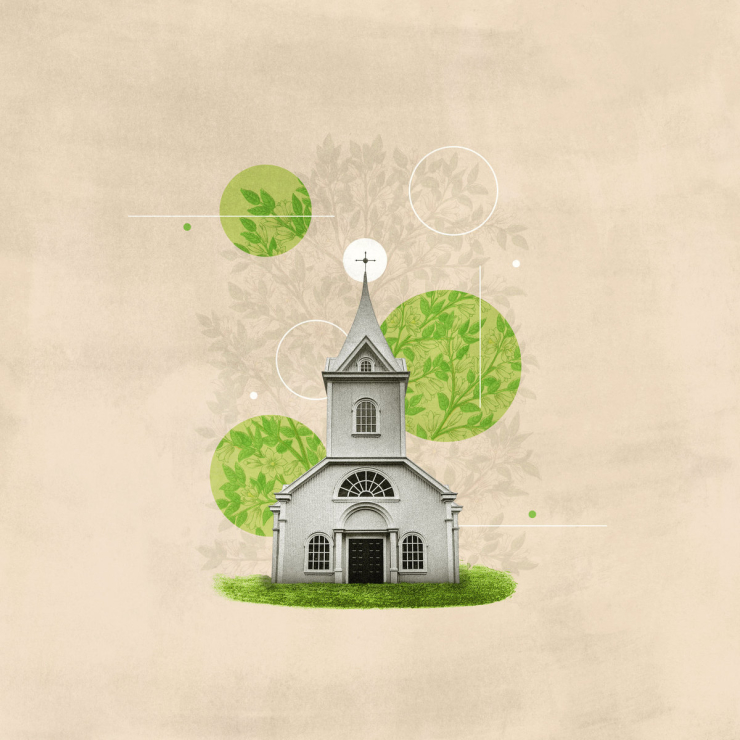How Do We Define the Church?

What does God love most in the world? When He looks down at the snow-topped mountains that He has made, they are breathtaking and beautiful, seemingly reaching up to heaven itself. Likewise, when He looks down on the ocean that He has made, it is sometimes tranquil and sometimes tempestuous, yet always teeming with life, mirroring back to God His creative glory. Even man retains a peculiar privilege, in that man alone is said to bear the image of its Creator with knowledge, righteousness, holiness, and dominion over the other creatures. But of all these things, it is the church that God loves the most in this world.
The Bible calls the church “the body of Christ” that He nourishes and cares for as He does Himself (Eph. 5). The church is His glorious temple, in which He is pleased to dwell (Rev. 21:3). It is His fullness, in the sense that the Father in heaven promised Jesus a great reward that includes His church (Col. 1:18–20). The church is also His adopted family whom He loves and protects (Gal. 4:5). Jesus came into the world not only in obedience to the Father’s will, fulfilling the mission the Father sent Him to accomplish (John 17:4); He also came into the world because of His great love for His church. Like a husband come to rescue his bride, a king come to save his people, or a shepherd come to rescue his sheep, Jesus came into the world because of His great love for His church. There is nothing in all this world that Jesus loves more than His church.
But what is the church, and when did it begin? Though the flower of the church truly blossoms in the New Testament, its seed begins to sprout noticeably in the soil of the Old Testament. In a certain sense, Adam and Eve were the first members of the church—at least, the church “under age” (Westminster Confession of Faith 19.3). When sin entered the world, God implemented His plan to save a people for Himself, a people who would be saved from sin and its wages—death. Their hope of salvation was not found in themselves, but in the promise, God made to send a Servant-Savior-Seed who would come in time in order to destroy the works of the intrusive serpent and redeem the people of God. Well before Jesus came into the world, God was gathering a people to Himself who would be, in time, united to Christ as beneficiaries of His redemptive work.
Nowhere is this clearer than with the people of Israel, the called-out people of God who descended from Adam and Abraham, and from whom Jesus would descend. When God called Israel out of Egypt, He called Israel His “son” (Hos. 11:1). Israel was set apart from the world foremost by the promise of God’s presence, but also by the covenant promises and commands God gave to Israel. But perhaps most significantly, God enshrined His promise to dwell in the midst of His people by granting them a temple in which His presence would spiritually dwell. This was the capstone of Israel’s identity in the world. God brought them out of Egypt, but far more importantly, God kept His promise to dwell in the midst of His people, to bless them, to guide them, to meet with them, and to receive their worship.
To be clear, not all Israel was true Israel in God’s sight. The church, even in the Old Testament, had both a visible and invisible component to it. If we can imagine two circles, one inside the other, the outer circle was the visible church—all Israel. The entire nation had been called out of Egypt and composed the gathered people of God. But only those within Israel who had faith would be saved everlastingly (the inner circle). Thus, there was a visible and invisible church, even in the Old Testament. That distinction remains in the New Testament, as not everyone baptized into the visible church, whether children or adults, are necessarily a part of the invisible church. They must enter that inner circle by faith; only then can they truly and everlastingly be a part of the body of Christ, His bride and His fullness.
The church is identified by three marks: the faithful preaching of God’s Word, the proper administration of the sacraments, and church discipline. These are the essential qualities of a church. They overlap with the ordinary means of grace: the preaching of God’s Word, the sacraments, and prayer. As Calvin said, where we find these things faithfully practiced, there we find a true church. These are the things that matter most in a church—not the style of music, the length of the service, or the number of people our age. The marks and means of the church are essential to her identity and should be at the core of how we think about the church.
The great privilege of a Christian is not only to be loved by Jesus, but to love Him and all that He loves. If His greatest love in this world is His church, we should love it as well. In many ways, it is the most beautiful way in which we express our love for Him.